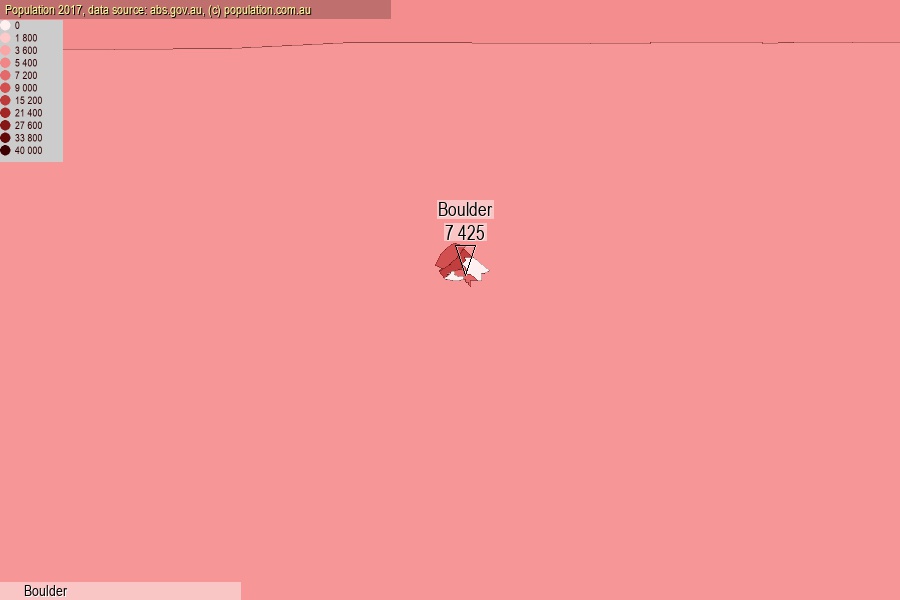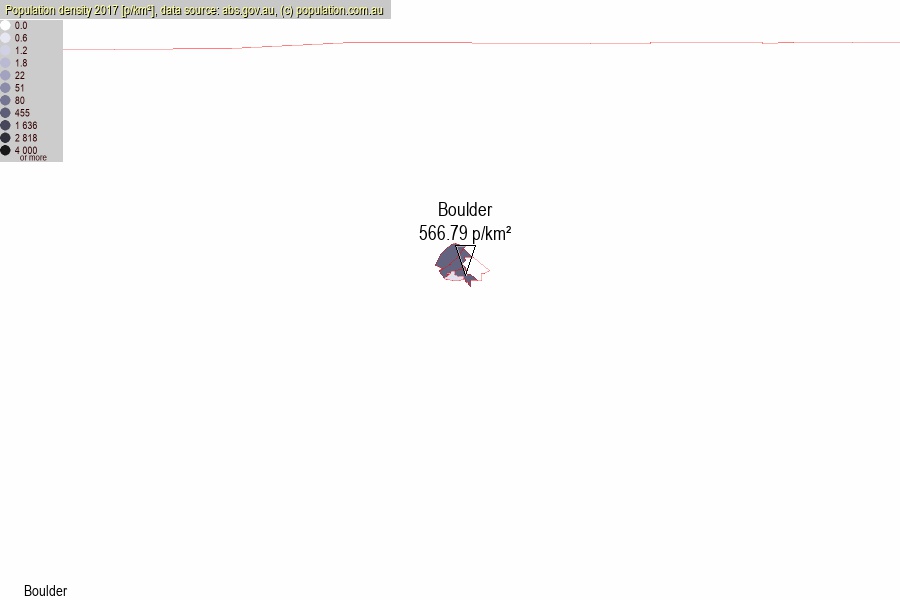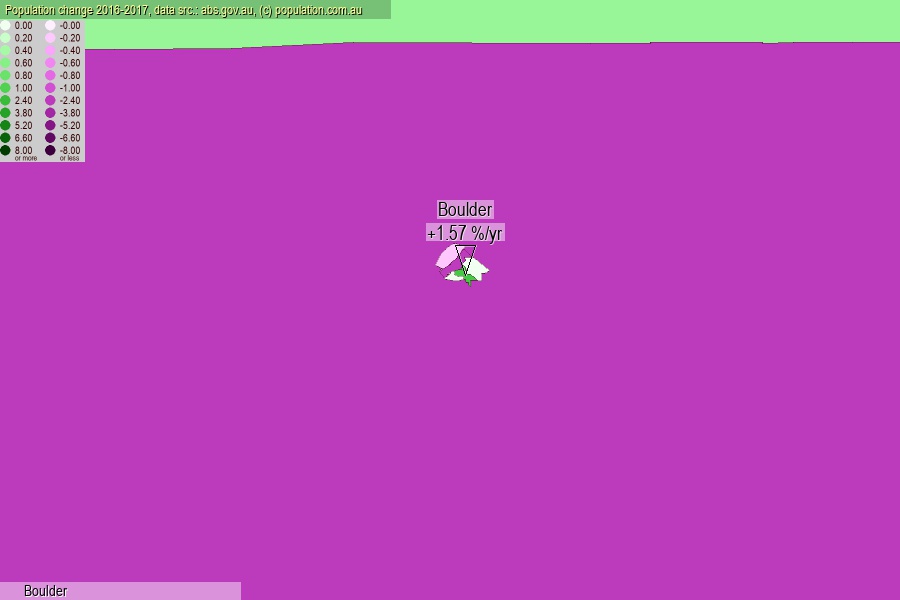 population.com.au
population.com.auLast official estimated population of Boulder (as Statistical Area Level 2) was 7 425 people (on 2017-06-30)[2]. This was 0.03% of total Australian population and 0.286% of WA population. Area of Boulder is 13.10 km², in this year population density was 566.79 p/km² . If population growth rate would be same as in period 2016-2017 (+1.57%/yr), Boulder population in 2025 would be 8 413. [0]



Click to enlarge. Boulder is located in the center of the images.
Population [people], population density [p./km²] and population change [%/year] [2]
View borders » (new window) [4]
[2001-2002] -0.72 %/Yr.
[2002-2003] -0.32 %/Yr.
[2003-2004] -0.57 %/Yr.
[2004-2005] -0.84 %/Yr.
[2005-2006] -0.53 %/Yr.
[2006-2007] -0.27 %/Yr.
[2007-2008] +0.89 %/Yr.
[2008-2009] +1.04 %/Yr.
[2009-2010] +0.36 %/Yr.
[2010-2011] +0.22 %/Yr.
[2011-2012] +1.27 %/Yr.
[2012-2013] +0.53 %/Yr.
[2013-2014] -2.59 %/Yr.
[2014-2015] -3.29 %/Yr.
[2015-2016] -5.13 %/Yr.
[2016-2017] +1.57 %/Yr.
[0] Calculated with linear interpolation from officially estimated population
[1] Read more about SA2 and Australian Statistical Geography Standard (ASGS) on abs.gov.au
[2] Population data from Australian Bureau of Statistics (Population and density: 2017; change: 2016-2017)
[3] Digital Boundaries: Australian Statistical Geography Standard (ASGS) 2016.
[4] Border coordinates are simplifyed using Ramer-Douglas-Peucker algorithm.